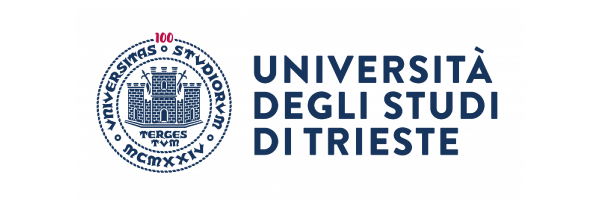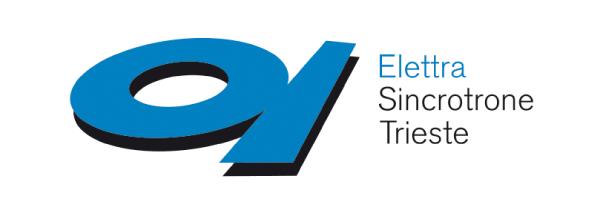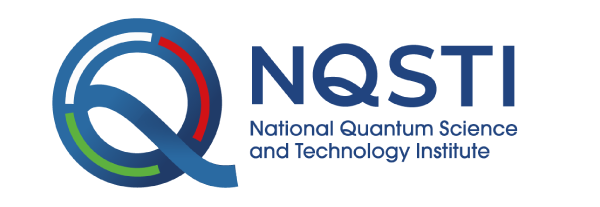The ANCHOR-SUNDYN laboratory
The ANCHOR-SUNDYN endstation at the ALOISA beamline of the Elettra Synchrotron (Trieste, Italy) allows for performing a
variety of “static” and time-resolved spectroscopies on organic films and interfaces.
The photon energy range of the beamline is 140-1200 eV, with a resolving power in the order of 2000-5000 in standard
working conditions (0.5-1×1012 photons/s). High-resolution X-ray photoelectron spectroscopy (XPS) and near-edge X-ray
absorption fine structure spectroscopy (NEXAFS) are typically employed for the chemical analysis of the samples. The
chamber is also equipped with a monochromatic X-ray source (Omicron XM1000 MkII) and a helium discharge lamp (Omicron
HIS 13) which are used for a complementary characterization of the systems and “offline” (i.e., without synchrotron
radiation) measurements. Photoelectrons are detected via a 150 mm analyzer (SPECS, Phoibos 150); the electron detector
is a 2D delay-line, specifically developed for time-resolved experiments.
 A variable temperature (200–900 K) sample holder is mounted
on a 5-axis manipulator (VG), and a load-lock system is also
present for fast sample replacement. Both the chamber setup and the sample holder have been developed in-house. The
system operates in ultra-high vacuum (UHV) conditions, with a typical base pressure of 2×10-10 mbar. Sample growth is
performed in situ via physical vapor deposition (PVD) either through effusion cells or Pyrex vials.
The excitation source for time-resolved spectroscopies is a Yb:YAG fiber laser (Amplitude Systèmes, Tangerine HP), whose
fundamental wavelength is 1030 nm (1.2 eV). Non-linear beta barium borate crystals are used for generating the higher
harmonics up to the 5th (i.e., 515, 343, 257, and 206 nm). The laser can operate at repetition rates between 175 kHz and
2 MHz. In this range, it provides > 35 W of average power, consequently, the energy per pulse ranges from 200 μJ down to
∼18 μJ. The pulse duration can be varied from 310 fs up to 10 ps by tuning the pulse compressor. A large part of the
laser output (26 W) is used to feed an optical parametric amplifier (Amplitude Systèmes, Mango OPA) which provides full
photon energy tunability in the 210–2600 nm wavelength range. It has been configured for operation at 385 kHz. The OPA
output can be used either for optical pump / X-ray probe experiments or for time-resolved two-photon photoemission
(tr-2PPE) measurements, in which one of the discrete harmonics of the fundamental laser frequency is used as a probe.
A variable temperature (200–900 K) sample holder is mounted
on a 5-axis manipulator (VG), and a load-lock system is also
present for fast sample replacement. Both the chamber setup and the sample holder have been developed in-house. The
system operates in ultra-high vacuum (UHV) conditions, with a typical base pressure of 2×10-10 mbar. Sample growth is
performed in situ via physical vapor deposition (PVD) either through effusion cells or Pyrex vials.
The excitation source for time-resolved spectroscopies is a Yb:YAG fiber laser (Amplitude Systèmes, Tangerine HP), whose
fundamental wavelength is 1030 nm (1.2 eV). Non-linear beta barium borate crystals are used for generating the higher
harmonics up to the 5th (i.e., 515, 343, 257, and 206 nm). The laser can operate at repetition rates between 175 kHz and
2 MHz. In this range, it provides > 35 W of average power, consequently, the energy per pulse ranges from 200 μJ down to
∼18 μJ. The pulse duration can be varied from 310 fs up to 10 ps by tuning the pulse compressor. A large part of the
laser output (26 W) is used to feed an optical parametric amplifier (Amplitude Systèmes, Mango OPA) which provides full
photon energy tunability in the 210–2600 nm wavelength range. It has been configured for operation at 385 kHz. The OPA
output can be used either for optical pump / X-ray probe experiments or for time-resolved two-photon photoemission
(tr-2PPE) measurements, in which one of the discrete harmonics of the fundamental laser frequency is used as a probe.
Our work is currently supported by: the National Quantum Science and Technology Institute (NQSTI) - funded
by the European Union Next-GenerationEU (Piano Nazionale di Ripresa e Resilienza, PNRR - Missione 4 componente 2,
investimento 1.3 – PE_00000023); the PRIN grant 2022-MEGS (Nr. 20224PYT7C) of the Italian Ministry of
Universities and Research (MUR); EUROFEL MIUR Progetti Internazionali.
We acknowledge the support from the PRIN grant 2017-FERMAT (Nr. 2010KFY7XF), the SIR grant SUNDYN (Nr. RBSI14G7TL) and the FIRB grant ANCHOR
(Nr. RBFR10FQBL) of the Italian Ministry of Education Universities and Research (MIUR).

 A variable temperature (200–900 K) sample holder is mounted
on a 5-axis manipulator (VG), and a load-lock system is also
present for fast sample replacement. Both the chamber setup and the sample holder have been developed in-house. The
system operates in ultra-high vacuum (UHV) conditions, with a typical base pressure of 2×10-10 mbar. Sample growth is
performed in situ via physical vapor deposition (PVD) either through effusion cells or Pyrex vials.
The excitation source for time-resolved spectroscopies is a Yb:YAG fiber laser (Amplitude Systèmes, Tangerine HP), whose
fundamental wavelength is 1030 nm (1.2 eV). Non-linear beta barium borate crystals are used for generating the higher
harmonics up to the 5th (i.e., 515, 343, 257, and 206 nm). The laser can operate at repetition rates between 175 kHz and
2 MHz. In this range, it provides > 35 W of average power, consequently, the energy per pulse ranges from 200 μJ down to
∼18 μJ. The pulse duration can be varied from 310 fs up to 10 ps by tuning the pulse compressor. A large part of the
laser output (26 W) is used to feed an optical parametric amplifier (Amplitude Systèmes, Mango OPA) which provides full
photon energy tunability in the 210–2600 nm wavelength range. It has been configured for operation at 385 kHz. The OPA
output can be used either for optical pump / X-ray probe experiments or for time-resolved two-photon photoemission
(tr-2PPE) measurements, in which one of the discrete harmonics of the fundamental laser frequency is used as a probe.
A variable temperature (200–900 K) sample holder is mounted
on a 5-axis manipulator (VG), and a load-lock system is also
present for fast sample replacement. Both the chamber setup and the sample holder have been developed in-house. The
system operates in ultra-high vacuum (UHV) conditions, with a typical base pressure of 2×10-10 mbar. Sample growth is
performed in situ via physical vapor deposition (PVD) either through effusion cells or Pyrex vials.
The excitation source for time-resolved spectroscopies is a Yb:YAG fiber laser (Amplitude Systèmes, Tangerine HP), whose
fundamental wavelength is 1030 nm (1.2 eV). Non-linear beta barium borate crystals are used for generating the higher
harmonics up to the 5th (i.e., 515, 343, 257, and 206 nm). The laser can operate at repetition rates between 175 kHz and
2 MHz. In this range, it provides > 35 W of average power, consequently, the energy per pulse ranges from 200 μJ down to
∼18 μJ. The pulse duration can be varied from 310 fs up to 10 ps by tuning the pulse compressor. A large part of the
laser output (26 W) is used to feed an optical parametric amplifier (Amplitude Systèmes, Mango OPA) which provides full
photon energy tunability in the 210–2600 nm wavelength range. It has been configured for operation at 385 kHz. The OPA
output can be used either for optical pump / X-ray probe experiments or for time-resolved two-photon photoemission
(tr-2PPE) measurements, in which one of the discrete harmonics of the fundamental laser frequency is used as a probe.




